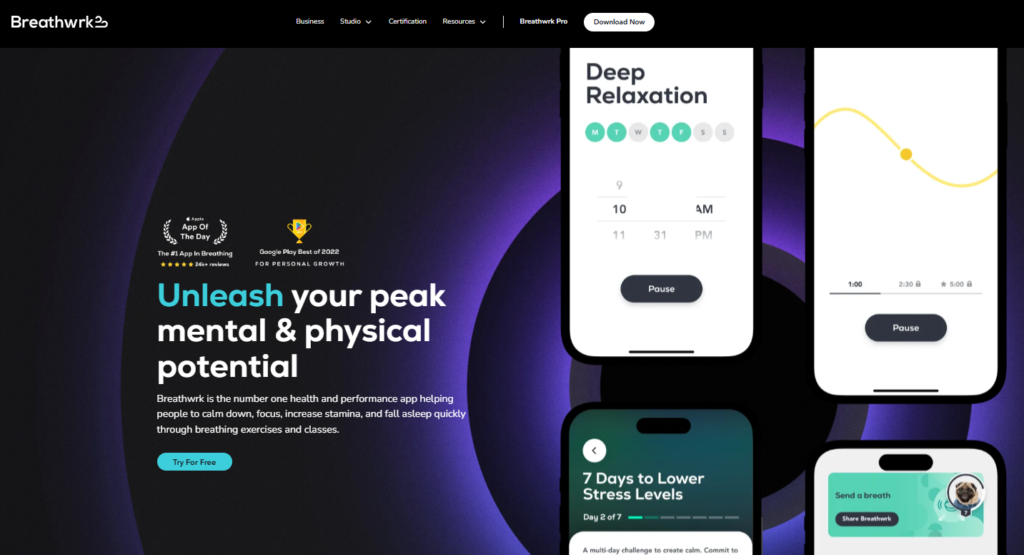For More Free Videos, Subscribe to the Rhodes Brothers YouTube Channel.
Have you ever struggled to express yourself clearly in a conversation, only to feel misunderstood or disconnected from the person you’re speaking with? You’re not alone. Communication is one of the most fundamental aspects of human interaction, yet it’s something so many of us find challenging. The good news is, building confidence in conversations isn’t about being naturally charismatic or extroverted—it’s about using the right techniques.

John S. Rhodes, of the Rhodes Brothers, said it best: “It’s not just about what you say; it’s about how you open the emotional door for someone else to feel heard and understood.” In other words, confidence in communication starts with connection. Whether you’re trying to fix a relationship, negotiate at work, or simply feel more at ease in social situations, this guide will give you actionable strategies to speak with confidence, clarity, and purpose.
TL;DR
- Start Neutral: Begin conversations from an emotionally balanced state for better outcomes. Avoid engaging when you’re too angry or overly excited.
- Be Clear About What You Want: Clearly state your desires or goals in a concise, declarative way.
- Ask Emotionally-Driven Questions: Use phrases like “Do you feel the same?” to open the conversation emotionally.
- Listen Intensely: Great communication is more about listening than talking. Use strong eye contact and body language to show you care.
- Find Common Ground: Identify shared goals or interests to align your wants with the other person’s.
- Thank Them for Sharing: Always close the conversation by expressing gratitude for their openness.
The 5-Step Framework to Talk to People with Confidence
Good communication isn’t something you’re born with—it’s a skill you can learn and refine over time. Whether you’re navigating a high-stakes meeting, resolving a conflict, or simply trying to make a meaningful connection, confident conversations are built on techniques anyone can master. The 5-Step Framework to Talk to People with Confidence is designed to help you communicate clearly, listen deeply, and build stronger relationships, no matter the situation.
Let’s dive into the first step.
Step 1: Start from Neutral
One of the most overlooked aspects of confident communication is your emotional state when beginning a conversation. According to John S. Rhodes, “Neutral is fantastic. This is one of those rare cases where being average is your best friend.” Why? Because starting from a neutral emotional state ensures that your message isn’t drowned out by strong emotions like anger or excitement.
When you’re too emotionally charged—whether happy or upset—you run the risk of overwhelming the other person or losing clarity in your message. Starting neutral helps you focus on the conversation itself, not your emotional response to it.
How to Set Yourself Up for Success:
- Pause and Assess: Before you start, ask yourself: “Am I too emotional to communicate clearly right now?” If the answer is yes, take a few moments to calm down.
- Practice Grounding Techniques: Deep breathing, mindfulness exercises, or even a short walk can help you center yourself. Tools like Calm or Headspace are excellent apps for managing pre-conversation nerves or anxiety.
- Avoid Knee-Jerk Reactions: If the situation is urgent but you’re feeling overwhelmed, say something like, “Let me take a moment to gather my thoughts before we talk.” This creates space for clarity and ensures the conversation begins on the right foot.

- Tool Recommendation: Apps like Breathwrk can guide you through quick breathing exercises to help reset your emotional state.
Step 2: Clearly State What You Want
The cornerstone of confident communication is clarity. People respond best to direct, concise communication, so don’t beat around the bush or leave room for misinterpretation. Start by making a clear, declarative statement about what you want.
Examples of Clear, Confident Statements:
- Instead of saying, “I think we should talk,” say, “I want us to work on improving our communication.”
- Instead of being vague, say, “I want us to plan a weekend getaway to reconnect.”
Pro Tip: Use Emotion-Based Wants
Rather than focusing solely on tangible outcomes, center your statement on how you feel or want to feel. This not only makes your message more relatable but also helps others emotionally connect with your goals.
Emotion-Based Examples:
- “I want us to feel more connected as a team.”
- “I want to feel supported in this project.”
According to Rhodes, ambiguity is the enemy of effective communication. The clearer your statement, the easier it is for the other person to understand and respond.
Tool Recommendation: Use MindMeister, a mind-mapping app, to organize your thoughts and clarify what you want before initiating a conversation.
Step 3: Ask Emotionally-Driven Questions
Asking questions is an art, and the most effective ones are open-ended and emotionally charged. Rhodes emphasizes the power of using the word “feel” because it encourages the other person to open up and fosters a deeper emotional connection.
Examples of Emotionally-Driven Questions:
- “Do you feel the same way?”
- “How do you feel about what I just said?”
- “What’s most important to you in this situation?”
Unlike yes/no questions, emotionally-driven questions invite dialogue and create opportunities for understanding. They show that you value the other person’s perspective, which naturally builds rapport.
Tools to Help You Frame Questions:
- The Feel-Think-Do Framework: Ask questions that touch on:
- Feel: How does this make them feel?
- Think: What’s their logical perspective?
- Do: What action would they like to take?

PromptSmart: This app helps you practice phrasing and delivering questions naturally before important conversations.
Example in Action: Instead of asking, “Do you agree with me?” try, “How do you feel about the direction I’m proposing?” This subtle shift invites honesty and collaboration.
Step 4: Listen Intensely
Listening is the unsung hero of confident communication. The key isn’t just to hear what the other person is saying but to make them feel heard. According to Rhodes, listening with “intensity and full-on eye contact” transforms a conversation from surface-level to deeply meaningful.
Tips for Intense Listening:
- Make Eye Contact: Not in a way that feels intimidating, but enough to show you’re fully present.
- Mirror Their Body Language: Subtly matching their gestures or posture can create a sense of alignment and trust.
- Validate Their Feelings: Use empathetic phrases like, “I understand why you feel that way.”
- Avoid Interrupting: Even if you have a brilliant point, wait for them to finish speaking.
Quote to Remember: As Stephen R. Covey famously said, “Most people do not listen with the intent to understand; they listen with the intent to reply.” Shift your focus to genuinely understanding the other person, and your confidence in conversations will naturally grow.
Listening Tools:
- Otter.ai: Record and transcribe conversations to reflect on how well you listened and responded.
- Reflectly: A journaling app that helps you process conversations and identify areas for improvement.
Step 5: Find Common Ground
Once you’ve expressed your goals and listened deeply, the next step is to align your objectives with the other person’s. Even if disagreements arise, there’s almost always a shared interest or compromise that can lead to collaboration.
Example of Finding Common Ground:
Scenario: Let’s say you want to start a new project, but your colleague is hesitant.
- You: “I want to create a new marketing strategy for our product. Do you feel the same?”
- Them: “Not really. I think we should focus on refining our current strategy first.”
- You: “I see your point. What if we refine the current strategy while brainstorming ideas for the new one?”
By acknowledging their perspective and tying it back to your original goal, you create a win-win situation.
Tools to Help You Find Common Ground:
- Trello: Use this collaboration tool to visually map out shared goals and identify areas of alignment.
- Miro: A digital whiteboard that’s perfect for brainstorming solutions when trying to find compromises.
Actionable Steps to Talk to People with Confidence
Talking to people with confidence is a skill that anyone can develop, regardless of experience level. If you’re a beginner, start by focusing on the basics. Begin with small, low-stakes conversations, such as chatting with a barista or acquaintance, to build comfort and momentum. Use open body language—stand tall, keep your arms uncrossed, and maintain relaxed eye contact to project confidence. Preparing a few conversation starters ahead of time, like “What’s the best thing that happened to you this week?” or “Have you watched any great shows recently?” can also help you avoid awkward silences. Most importantly, practice active listening by nodding, maintaining eye contact, and using verbal cues like “I see” or “That’s interesting” to show engagement.
For those with some experience who want to refine their skills, focus on strategies that enhance clarity and emotional connection. One effective tip is to pause for three seconds before responding during a conversation. This brief pause gives you time to collect your thoughts and ensures your response is intentional rather than reactive. Asking thoughtful, open-ended questions, such as “What was your favorite part of the event?” instead of “Did you like the event?” invites deeper dialogue. Additionally, practicing power poses—standing tall with your hands on your hips or in another confident posture—before stressful interactions can help you feel more self-assured. Research suggests this simple technique reduces stress and boosts confidence.
If you’re already comfortable in most conversations, the next step is to master connection and influence. Subtly mirroring the other person’s tone, energy, and body language creates a sense of alignment and makes them feel at ease. Use empathy statements like “I can see why you’d feel that way” or “That sounds like a challenging situation” to build trust and show understanding. To leave a lasting impression, end conversations on a positive note by summarizing key points or expressing gratitude, such as “I really enjoyed hearing your perspective—it gave me a lot to think about.”
For introverts, confidence in communication doesn’t require being loud or outgoing. Instead, lean into your natural strength as a listener by asking open-ended questions and letting others share their thoughts fully. Preparing a few key points or questions in advance can also ease anxiety. Millennials navigating professional networking or virtual spaces can benefit from tools like PromptSmart or GrammarlyGo to refine tone and clarity in digital conversations, while mastering video call etiquette—such as maintaining eye contact with the camera and minimizing distractions—can create a confident virtual presence.
For those nearing retirement, sharing personal stories is a powerful way to connect across generations. Whether mentoring others or forming new relationships, focus on active listening and tailoring your advice to the other person’s needs.
Across all demographics, some universal strategies can help you build confidence in any conversation. Apply the 70/30 rule: listen 70% of the time and talk 30%, ensuring you engage without dominating. Practice self-affirmations before conversations, such as, “I am confident, calm, and capable,” to reset your mindset. Reflect on your interactions afterward by asking, “What went well? What could I improve?” to identify growth opportunities. Tools like Toastmasters for public speaking practice, Reflectly for journaling conversations, or Breathwrk for calming pre-conversation nerves can also accelerate your progress.
Talking to people with confidence takes time, consistency, and practice. Start small, focus on building connections, and celebrate your progress along the way. Whether you’re just beginning or looking to master advanced techniques, these strategies will help you feel more self-assured and create stronger, more meaningful connections.
Common Mistakes to Avoid
Even with the best intentions, there are common mistakes that can undermine your efforts to communicate confidently. These pitfalls often go unnoticed but can significantly impact how your message is received and how others perceive you. By identifying and addressing these challenges, you can fine-tune your approach and ensure your conversations are not only confident but also meaningful and effective. Let’s explore these mistakes in depth and how to avoid them.
Being Too Vague
Ambiguity is one of the biggest obstacles to effective communication. When you’re unclear about what you want or what you’re asking for, it leaves room for misunderstandings and confusion. For example, saying, “We should talk sometime,” is less effective than saying, “I’d like to meet on Friday to discuss our next steps.” Confidence comes from clarity, so make your intentions or requests as specific as possible. To avoid vagueness, prepare in advance and focus on using direct, actionable language. Instead of hinting or beating around the bush, clearly state your goals, such as, “I’d like us to brainstorm ways to improve team communication.” The more precise you are, the easier it is for the other person to understand and respond effectively.
Dominating the Conversation
Confidence is often mistaken for taking the lead and steering the conversation, but true confidence lies in balance. Talking over the other person, interrupting, or monopolizing the discussion can make you seem overbearing or dismissive, even if that’s not your intention. Conversations are a two-way street, and listening is just as important as speaking. To avoid this mistake, apply the 70/30 rule: listen 70% of the time and speak 30%. Show genuine interest in the other person’s input by asking follow-up questions like, “What are your thoughts on that?” or “How do you see this playing out?” This not only fosters collaboration but also reinforces your confidence by demonstrating that you value their perspective. Remember, confidence isn’t about dominating—it’s about connecting.
Avoiding Emotional Questions
Many people shy away from emotionally-driven questions because they fear making the conversation too personal or uncomfortable. However, skipping these questions can make the interaction feel shallow or transactional. Emotional questions, such as “How do you feel about this?” or “What’s most important to you in this situation?” encourage the other person to open up and share their genuine thoughts and feelings. These questions create a deeper connection and signal that you’re confident enough to navigate meaningful conversations. To avoid this pitfall, practice integrating emotional questions naturally into your dialogue. Start with simple, open-ended prompts like, “How does that impact you?” or “How do you feel we could approach this together?” These questions not only build rapport but also allow you to uncover valuable insights that can strengthen your communication.
Failing to Follow Up
A common mistake is neglecting to acknowledge or build on what the other person has shared. When someone opens up or provides input, and you fail to respond meaningfully, it can make them feel unheard or dismissed. For instance, if a colleague shares a concern, simply moving on without addressing it can weaken trust and rapport. Confident communicators don’t just listen—they engage. To avoid this, actively validate the other person’s contribution by paraphrasing or building on their ideas. For example, you might say, “I see what you’re saying. That’s a good point, and it makes me think we could try [specific action]. What do you think?” This not only shows that you’re paying attention but also fosters collaboration and keeps the conversation dynamic.
Overcomplicating Your Message
Confidence doesn’t mean using big words, complex phrasing, or providing excessive detail to impress the other person. In fact, overcomplicating your message is more likely to confuse or overwhelm your audience. Communication is most effective when it’s simple, clear, and easy to follow. For example, instead of saying, “Given the multifaceted nature of the issue, we should endeavor to synthesize a comprehensive approach,” say, “Let’s work on a clear plan to address this issue.” To avoid overcomplication, focus on one key point at a time and use straightforward language. Structure your thoughts logically, and don’t be afraid to pause or rephrase if something isn’t resonating. Simplicity doesn’t undermine your confidence—it enhances it by making your message more accessible and relatable.
Frequently Asked Questions
How do I start a conversation confidently?
Begin with a clear goal in mind and start from a neutral emotional state. Use declarative statements like, “I’d like to discuss how we can work better together.”
What if the other person doesn’t agree with me?
That’s okay! Use Step 5 to find common ground. Align your goal with something they value to create a win-win outcome.
How can I improve my listening skills?
Practice active listening by maintaining eye contact, paraphrasing what the other person says, and avoiding distractions.
What’s the best way to handle disagreements?
Stay calm and focus on understanding the other person’s perspective before presenting your own.
How do I balance confidence and humility in conversations?
Be clear about what you want, but remain open to feedback. Confidence doesn’t mean being inflexible.
Can these techniques work in professional settings?
Absolutely! The steps outlined here are effective for both personal and professional conversations.
How long does it take to become a confident communicator?
With consistent practice, you can see improvements in as little as a few weeks.
What tools can help me practice these techniques?
Apps like PromptSmart for practicing speech or Reflectly for journaling your progress can be great resources.
How do I build emotional connections in conversations?
Ask emotionally-driven questions like, “How does that make you feel?” and validate their responses.
What if I’m naturally introverted?
Introverts can be excellent communicators by leveraging their natural listening skills and focusing on clarity in their message.
Building Confidence Through Connection
By now, you’ve learned that confident, impactful conversations don’t require you to be the loudest or most charismatic person in the room. Instead, they rely on clarity, emotional intelligence, and the ability to listen with intention. Confidence isn’t about dominating the conversation—it’s about fostering meaningful connections that leave both parties feeling heard and respected.
As John S. Rhodes explained, “Communication is a process where you align your desires and emotions with the other person’s, creating a win-win dynamic that feels natural and empowering.” When you embrace the steps outlined in this article, you’ll not only express yourself more confidently but also build trust and rapport in every interaction.
Key Takeaways to Implement Right Away:
- Start Neutral: Before diving into a conversation, ensure your emotions are balanced to avoid clouding your message.
- Be Clear: Clearly state your goals and desires using concise, declarative statements.
- Ask Emotional Questions: Use phrases like “Do you feel the same?” to foster emotional openness and dialogue.
- Listen Intensely: Practice active listening by maintaining eye contact, mirroring body language, and validating the other person’s feelings.
- Find Common Ground: Align your goals with theirs to create mutual understanding and collaboration.
- Express Gratitude: Always end the conversation by thanking the other person for sharing their thoughts and feelings.
Your next step? Practice these techniques in your next conversation—whether with a friend, colleague, or family member. Start small, stay intentional, and watch as your confidence grows with each interaction.
If you found these strategies helpful, there’s so much more waiting for you! Subscribe to the Rhodes Brothers YouTube Channel for more actionable tips, strategies, and deep dives into topics that will help you succeed in communication, relationships, and personal growth. New videos are added regularly, so don’t miss out!
Resource List
To help you continue your journey toward becoming a confident communicator, here’s a curated list of resources, tools, and books:
Books
- “Crucial Conversations: Tools for Talking When Stakes Are High” by Kerry Patterson, Joseph Grenny, et al.
- “Nonviolent Communication: A Language of Life” by Marshall B. Rosenberg.
- “You’re Not Listening: What You’re Missing and Why It Matters” by Kate Murphy.
- “How to Win Friends and Influence People” by Dale Carnegie.
Courses
- The Art of Communication on Coursera – A beginner-friendly course on mastering interpersonal communication.
- Skillshare: Confidence in Public Speaking – A practical course for building speaking confidence.
Podcasts
- “The Art of Charm” Podcast – Insights and strategies for improving your communication and relationships.
- “WorkLife with Adam Grant” – Explores psychology-driven tips for workplace communication.
- “Unlocking Us” by Brené Brown – A deep dive into vulnerability and connection.
Tools
- PromptSmart – A teleprompter app that helps you practice delivering clear, concise messages.
- Reflectly – A journaling app to reflect on conversations and track your communication growth.
- Grammarly – For refining the clarity and tone of your written communications.
Additional Blogs and Websites
- Greater Good Science Center – Research-backed articles on emotional intelligence and communication.
- The Harvard Business Review – Practical advice for workplace communication and leadership skills.
- Mind Tools – Offers free resources for mastering communication techniques.





